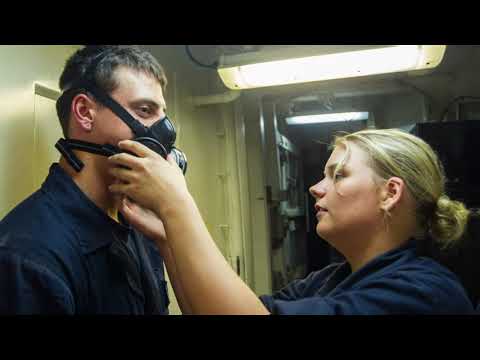OSHA has begun full enforcement of the silica dust standard across all industries. Are you using the right work practices? We share details on establishing the mandated engineering controls.
Respirators are a mandatory element of protecting employees from breathing in crystalline silica whenever a task fails to stay below the government-mandated exposure limits. But the long-term objective of the Occupational Safety and Health Administration’s silica dust standard is to reduce the risk of exposure as much as possible.
Health and labor regulators have been concerned about respirable crystalline particles for a long time—and with good reason: Silicosis is a nasty, slow-developing, chronic disease that can ruin a person’s ability to breathe.
It can cause lung cancer, damage the kidneys and the immune system’s ability to ward off infection—and ultimately be deadly. OSHA estimates 2.3 million workers are exposed to crystalline silica, with 2 million of them in the construction industry. The other 300,000 are in general industry.
The OSHA standard, 29 CFR 1926.1153, instructs employers to use engineering controls and work practices as the primary method for keeping respirable crystalline silica at or below the permissible exposure limit of 50 micrograms per cubic meter of air (μg/m3), averaged over an eight-hour day.
“Respirators are your last line of defense against occupational hazards,” notes a post by Trimedia Environmental & Engineering. “Engineering and work practice controls are much more effective means of reducing exposure to silica dust.”
What Is the Respirable Crystalline Silica Permissible Exposure Limit?
When it updated its 45-year-old standard three years ago, OSHA cut the crystalline silica PEL by 20 percent for construction and maritime industries and by 50 percent for general industry. OSHA issued the new rules in 2016; they took effect for construction in 2017, and for maritime and general industries in 2018. The final wave takes effect in June 2021, when hydraulic fracturing operations in the oil and gas industry must implement engineering controls.
“The agency determined that occupational exposure to respirable crystalline silica at the previous PELs resulted in a significant risk of developing or dying from silicosis and dying from lung cancer, other lung diseases or kidney disease,” OSHA notes in its silica FAQ.
In fact, the American Conference of Governmental Industrial Hygienists has suggested 25 μg/m3. But OSHA determined that 50 μg/m3 is “the lowest level that can reasonably be achieved through use of engineering controls and work practices in most affected operations,” the agency FAQ says
How to Implement a Silica Dust Engineering Control Plan
In its guidance, OSHA offers examples of how to control dust, from wetting down work areas and using exhaust ventilation to creating enclosed spaces for some processes and following manufacturer-recommended flow rates for tools with water controls. OSHA also provides a detailed table with suggested exposure control methods for several processes.
But, as with all safety efforts, it’s critical to develop and maintain a written plan that details how your business will manage its silica dust safety program.
Every business has slightly distinct needs, so a written plan is essential both for protecting your workers as well as for complying with OSHA requirements, note researchers from the Mount Sinai Selikoff Centers for Occupational Health.
In a guide to help businesses craft a compliance program, a team of researchers—including staff from the Mount Sinai centers—explains the elements that a safety team will want to include in a site-specific plan.
The guide recommends that the plan include details about nine elements:
An introduction that provides project description, location, scope and schedule of work
A personnel chart that at minimum identifies the project manager, the silica program manager and/or the industrial hygienist
A listing of all silica dust–emitting processes that describes the tasks, equipment, materials and work crew
An overview of the engineering and work practice controls that details the control type, equipment, planned use and necessary maintenance—along with an explanation for the controls and techniques chosen
Records of required air sampling and monitoring results for silica dust-emitting activities
Schedule for implementing the compliance program
Details about any interim controls, including respiratory PPE
Hygiene procedures related to protective clothing and equipment, housekeeping, clean areas, showers and hand-washing stations
A schedule of worker rotation on dust-inducing processes
In addition, the guide recommends including whatever plans and reporting your business has for respirator safety and for safety training.
For more tips, download our silica safety checklist.
Personal Protective Equipment and the Silica Dust Standard
OSHA is quick to note in its FAQ that “respirators are only allowed when engineering and work practice controls cannot maintain exposures at or below the PEL.” It views the use of PPE, while important, a temporary measure to avoid worker exposure.
That said, the standard does include recommended uses for masks and respirators, as well as for appropriate additional protective clothing and for wash stations. (This product selector can help you compare protective clothing.)
If businesses comply with the silica dust standard, OSHA estimates that reducing exposure to silica dust will prevent more than 600 deaths and about 900 new cases of silicosis annually.
Is controlling exposure to silica dust a concern for your business? If so, what engineering controls have you successfully implemented?







